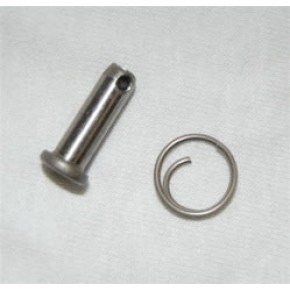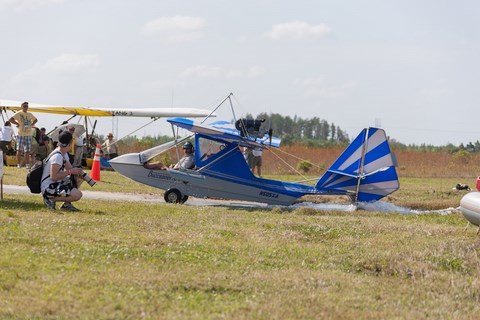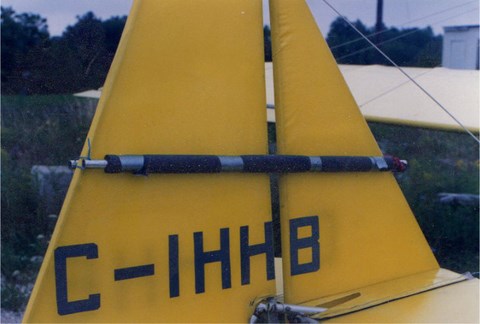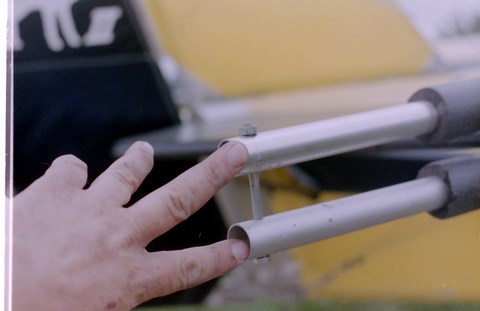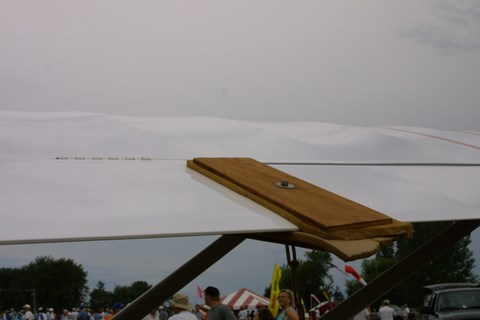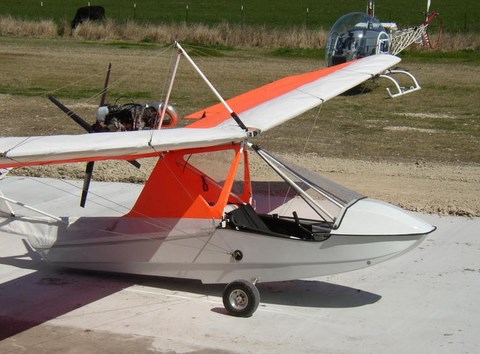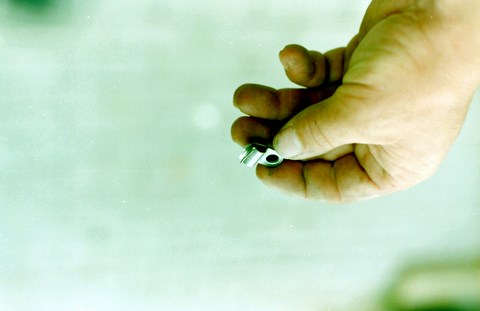Buccaneer XA ultralight aircraft troubleshooting the control system.
One of the problems reported in the control system was with the rudder compression strut. It was found that it would slide down inside the rudder covering. This caused the rudder fabric to become loose. The solution was to install the strut, then wrap several layers of tape around the leading edge of the rudderpost, directly under the compression strut. This prevented it from slipping down.
The Buccaneer was originally designed with spoilerons. The positioning and size of these was changed several times, then finally eliminated to be replaced with ailerons.
YOU CAN NOT REPLACE THE SPOILERON SYSTEM, BY SIMPLY ADDING AILERONS. THERE IS A COMPLETE RETROFIT KIT, WHICH ADDS LOWER BATTENS, SHORTENS AND STRENGTHENS THE WING, AND REQUIRES THE WINGSAIL TO BE RESOWN.
Another reported problem area was with the rudder cable attachment clevis pin rings. Because the Buccaneer is usually driven in an out of water it was found that this clevis pin clips would bend or become entangled in weeds.
This resulted in the clip coming free from the pin. This could result in loss of rudder control. The solution was to replace the pins and clips with nuts and bolts.
Another problem in early production models was the lower horizontal stabilizer support cables. These cables also used pins and clips, but were covered with a plastic sleeve. It was found that the sleeve in hot weather would work it way off, and that the pin and ring could become damaged or entangled in weeds or grass.
The solution was to reverse the cable so that the attachment point was at the horizontal stabilizer rather than on the lower airframe.
The teleflex cable running from the joystick to the aileron mixer has also been reported to break. This was usually found after a severe wind storm. I actually took off without noticing any damage to the cable during preflight, only to have the teleflex break 5 minutes from the field.
The aircraft is still controllable but does waddle through the sky.
The solution was to lock the ailerons up during storage outside. This is quite easy to do. We had a U shaped bracket made up that simply fits over the mixer and root tube.
BE SURE TO REMOVE IT BEFORE FLIGHT!
The ailerons on production models up to about 1988 used cables to activate them. These have been found to fray, or the pulleys wear. If you have cables operating your ailerons it is suggested that this be an area that be inspected each flight. Advanced Aviation changed to a push pull system of later models and this can be retrofitted to early aircraft.
Many pilots complained about the stiffness of the control system. It was found that this was caused by lack of lubrication between the cables and guide tubes used to route the rudder cables to the tail section.
The solution here was to remove the outer covering on the cables from about 3 inches before guide tubes, to 3 inches after the guide tubes, and to lubricate the tube with a silicone spray or other lubricant on a regular basis.
This modification was especially necessary in the back area of the hull. If the drag on the cables was to great it would pull the guide out of the retention bracket. This then allowed metal to metal contact between the guide and rudder cable. Which could lead to a very serious situation!
The only other area of concern with the control system was with the mixing mechanism used with the cable operated aileron system. Where the cables joined in at the mixer they were held in place by clevis pins and clips. These clips touch the root tube each time the ailerons are moved. Damage to the retaining clips has been reported!

